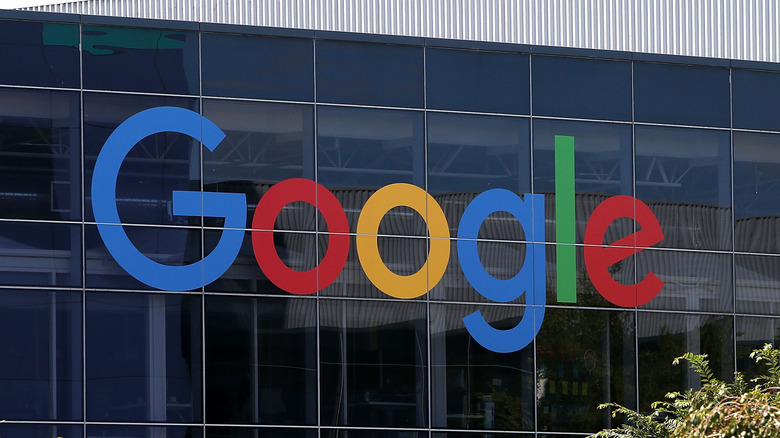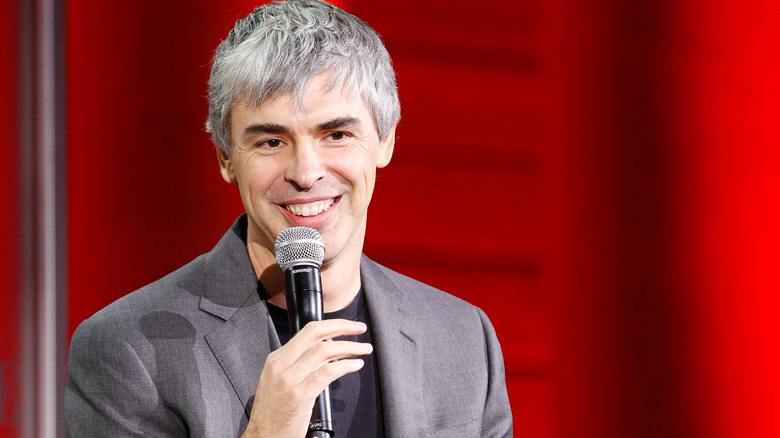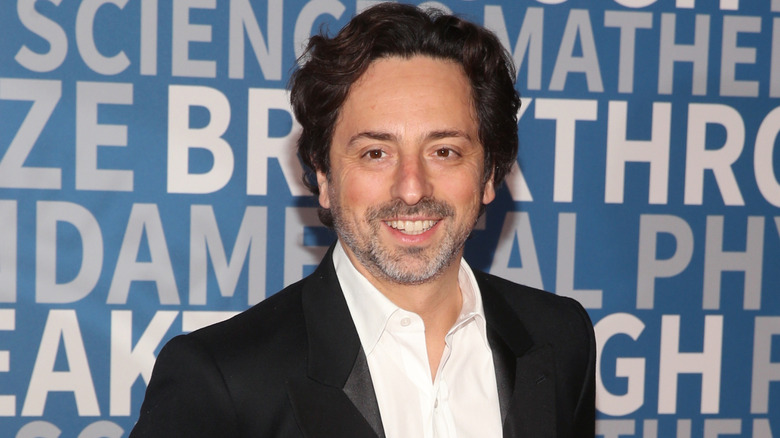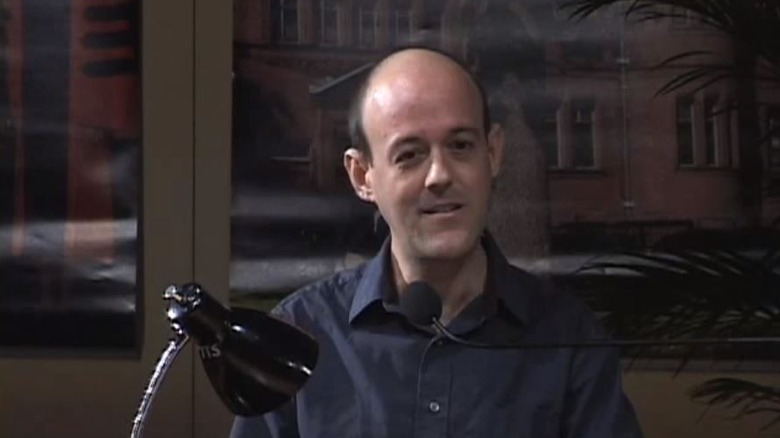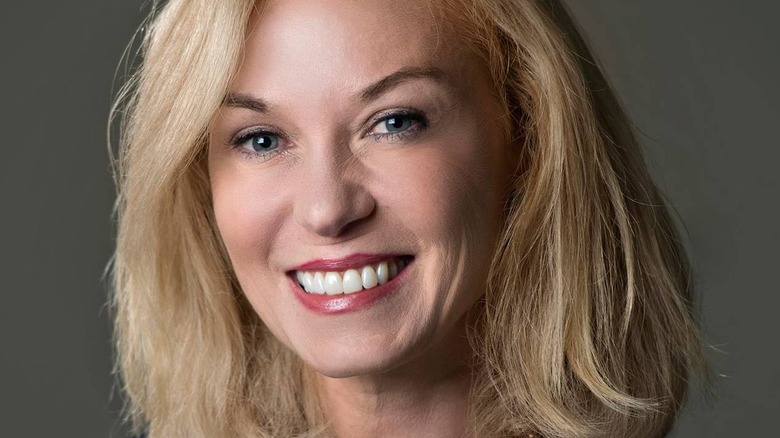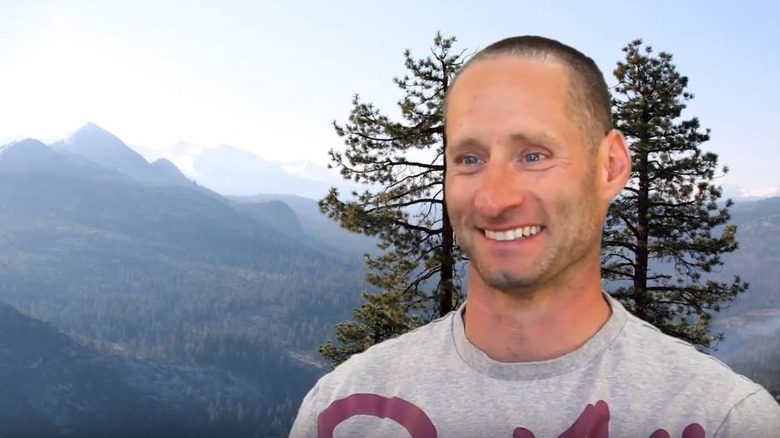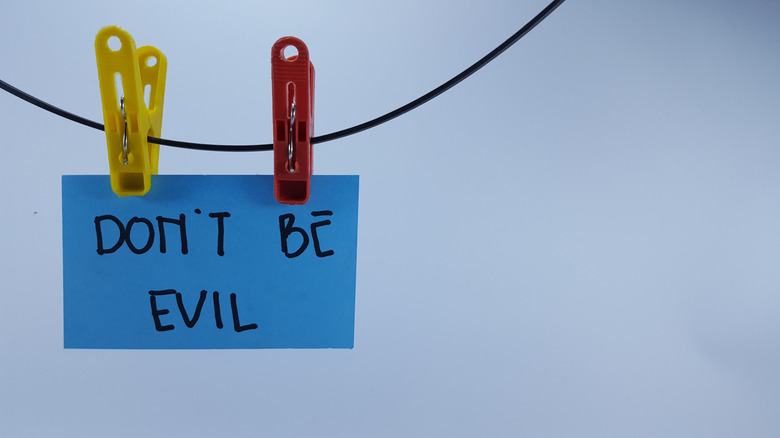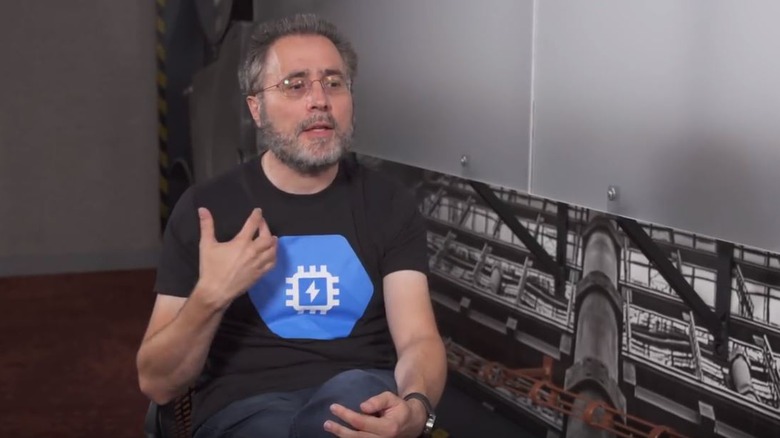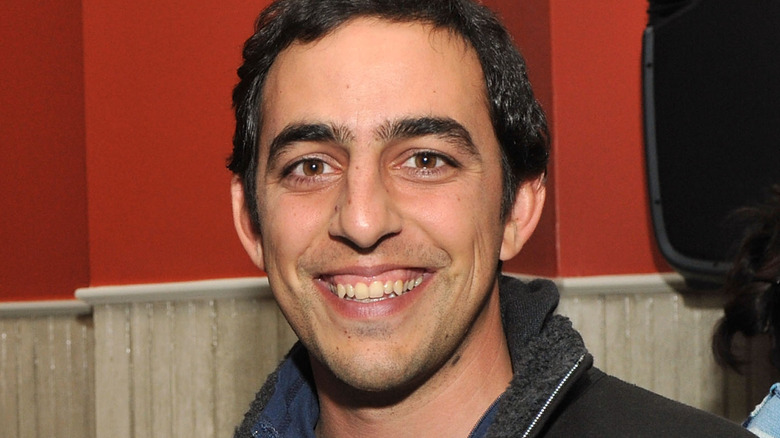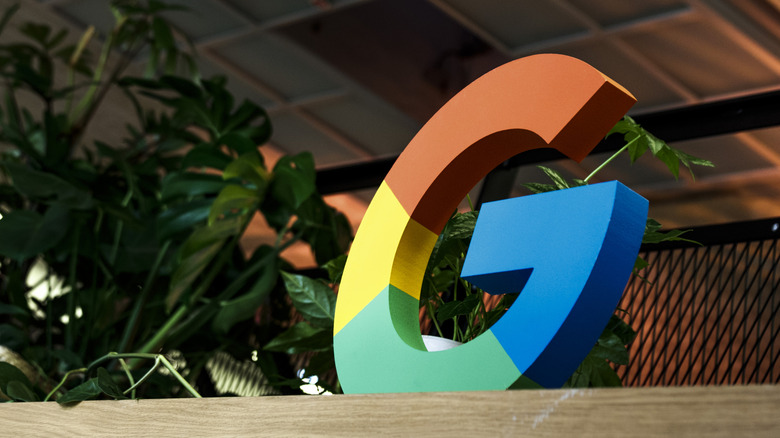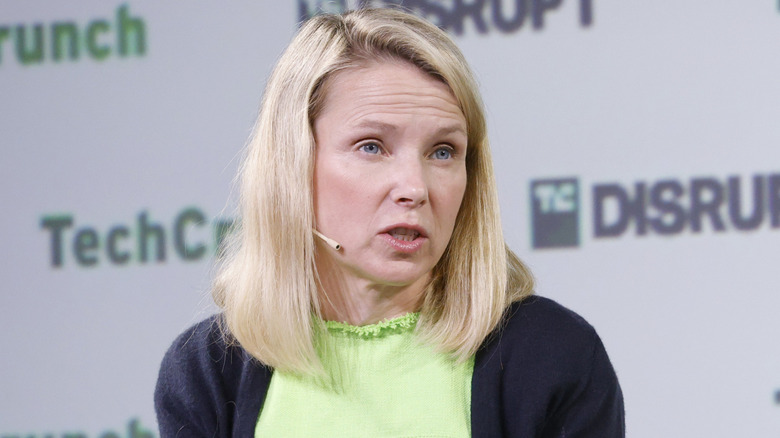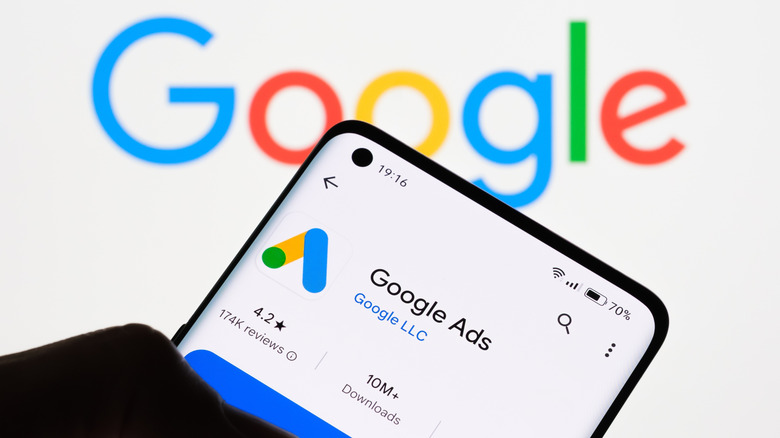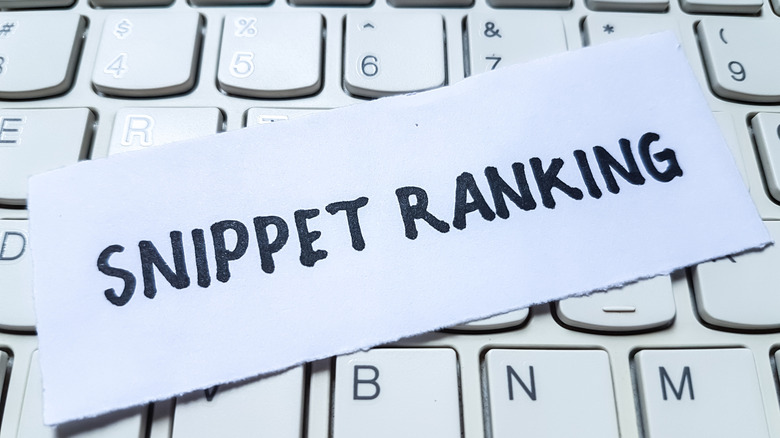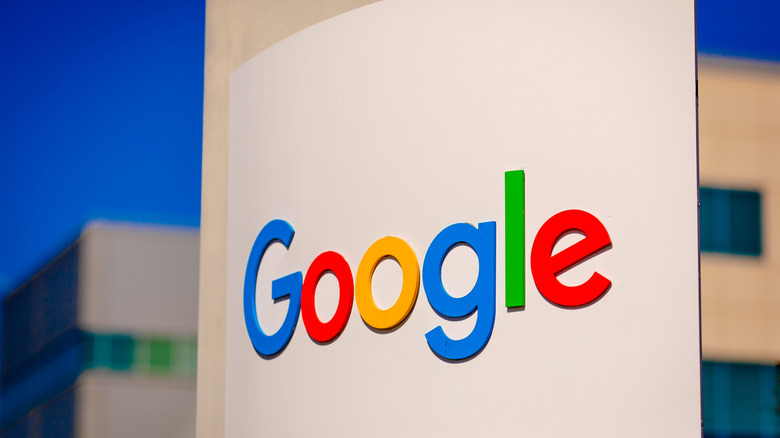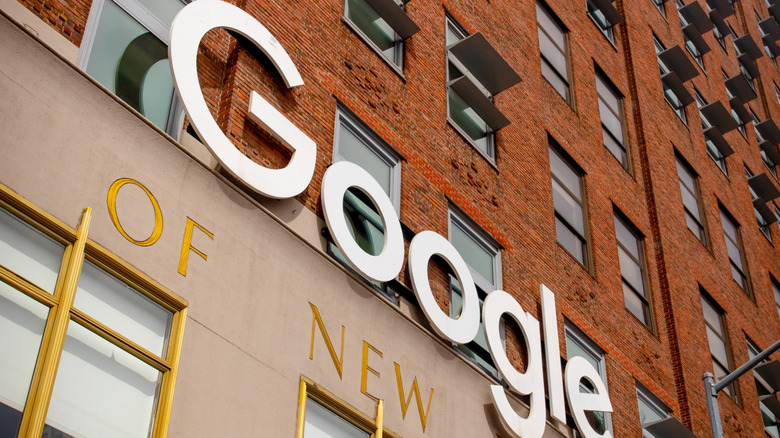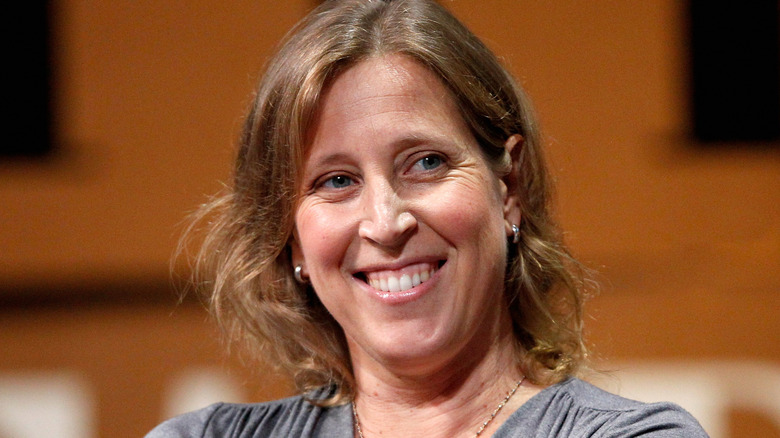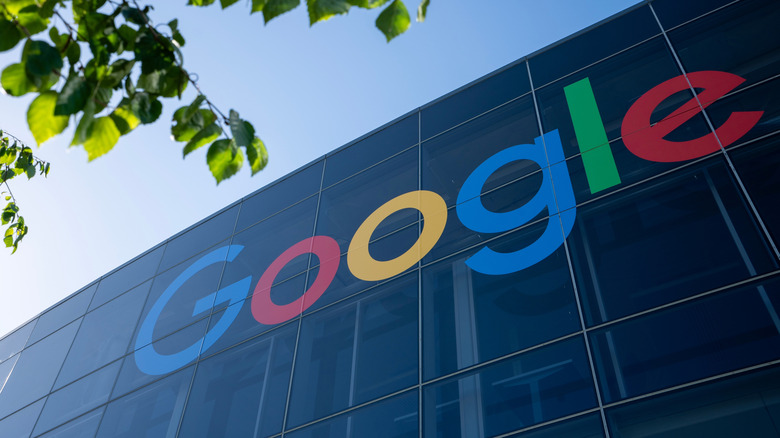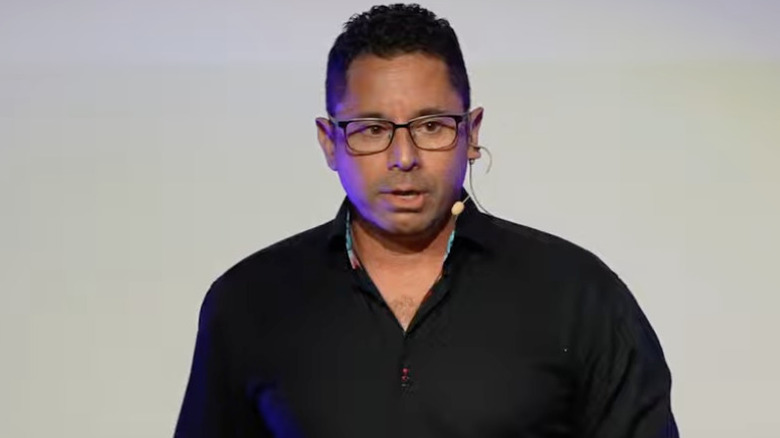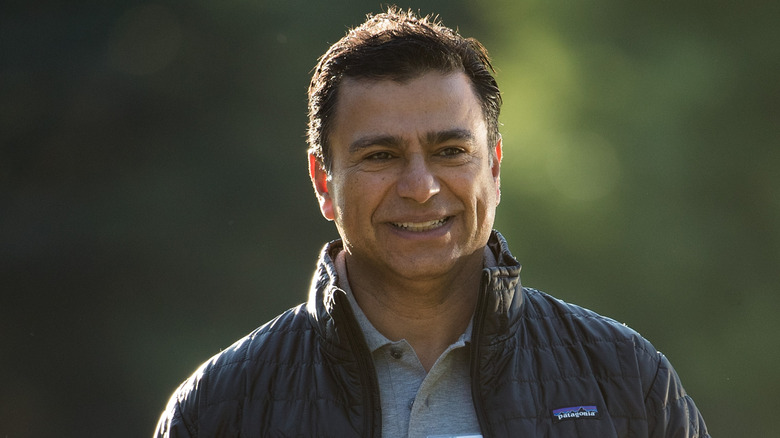Where Google's First 20 Employees Are Now
Back when Google first hit the scene, nobody could have foreseen how huge it would become. What was once merely a clever search engine has now remade the world in its image, with virtually every function of the internet connected to Google. Email has become Gmail. Ditch your hard drive, thanks to Google Drive. If you're not using an iPhone, you're probably using something running Android. Everywhere you look (and in many places you don't look), Google is there, just silently watching.
For many thousands of people, Google is also a workplace. But back in its earliest days, the future tech giant was just a dorm room, where a couple of dreamers — followed by a few more — worked together to create something new. While it's a bit tricky to pinpoint exactly who Google's first 20 employees were or the order they came in, these individuals all played key roles in bringing the early Google to life.
Larry Page
Larry Page was a kid raised on computers, and he jumped into computer engineering from an early age. When he arrived at Stanford University in the mid-'90s, he received a welcome tour from fellow student Sergey Brin. According to legend, the two future founders of Google didn't get along when they met, but like any great buddy flick, these squabbles led to the start of a great bromance.
Somehow, these two brainy dudes ended up working together in Page's dorm room, where they hashed out a new type of search engine technology that ranked web pages based on how many sites linked back to them. They originally called this great invention "PageRank" (boring), followed by "Backrub" (creepy), before finally settling on the name you know today: Google, which is an intentional misspelling of googol (a one followed by 100 zeroes).
This little dorm project blew up into its own company by 1998, and it has only grown bigger ever since. Throughout the tech giant's lifespan, Larry Page has always been involved, working as Google's CEO until 2011, followed by a stint as president of products before going back to his original position. One of the biggest shakeups occurred in 2015, when Google was restructured as a subsidiary of the newer, bigger company called Alphabet, with Page as top CEO, which he held until 2019. As a board member and controlling shareholder, Page is still very much involved in Google's future, and as of 2025, his net worth is well over $100 billion, a significant amount of which Page earned during the COVID-19 pandemic.
Sergey Brin
Sergey Brin and Larry Page went from PageRank to Alphabet together, but they came from rather different backgrounds. Brin was born in Moscow, Russia, and his parents, a scientist and a mathematician, fled to the United States in 1979 to escape the widespread Jewish persecution happening in their home country. Brin's knack for mathematics was what got him involved in Google in the first place, but he could never have calculated how huge the search engine would become. In 2004, when Google held its initial public offering, Brin became a billionaire, and as of 2025, his net worth is estimated at well over $100 billion.
Brin first became Google's president of technology in 2001, and since the company's 2015 corporate restructuring, he worked as president of Alphabet until 2019. Brin is still a board member of Alphabet and controlling shareholder, and outside of his Google life he has poured over $100 million of his personal funds into research on Parkinson's disease, which his mother had. He also runs the Brin Wojcicki Foundation alongside his ex-wife, Anne Wojcicki, who was the co-founder of the genetic testing company 23andMe, which was later embroiled in the debate over whether personal DNA can be sold to the highest bidder.
Cool side note: In addition to co-inventing Google, Brin also invented the now iconic Google "Doodle" artwork that occasionally decorates the homepage. When the Google crew attended Burning Man, Brin put up a logo for the festival, setting the stage for some of the more adventurous Doodles that would follow.
Craig Silverstein
While Brin and Page were the dynamic duo who turned on the Google machine, they were certainly not the only ones who have kept it running. They had to hire employees, and the very first one on their list was a fellow PhD student named Craig Silverstein. His skills at data mining and information retrieval proved pivotal in Google's early development, and when the search engine transformed from a dorm project hobby to a real business, Silverstein took on the more official role of technology director.
Though Silverstein originally planned to stay on for only four or five years, the search engine's stunning success kept him working there until 2012. Once he threw in his G-towel, he took on a new role as dean of infrastructure for Khan Academy. In 2014, Silverstein and his wife, Mary, signed the Giving Pledge, vowing to contribute most of their post-Google wealth to charitable causes. Thus far, their philanthropic focus has been on helping poverty and women's education in the developing world.
Heather Cairns
Like any good company, the early Google didn't neglect to implement a human resources department. Their first HR manager was Heather Cairns, a graduate of UC Berkeley and the Massachusetts College of Arts, who went on to hire the next 200 Google employees. Cairns is also the voice of Google's voicemail greeting, which is pretty cool, and she stayed with the company until 2005.
In her post-Google life, Cairns turned her attention toward helping others and exploring her creative potential. She became a philanthropist for disadvantaged women, attended graduate school for painting, and worked as an angel investor who focused on funding female-led companies. In 2015, she took on a role as the president of the real estate firm Coastal Streets, which counts among its successes a senior-living development called The Mariner. The latter is a very New England-style assisted living, independent living, and memory care center in her native Marblehead, Massachusetts.
Ray Sidney
Ray Sidney met the Google guys rather casually — through a friend who was dating Brin — but he proved to be a key early player in the search engine's development. Already a graduate of both Harvard and MIT, Sidney became Google's fifth employee and one of their earliest software engineers. He spent the next four years at his computer, then took a yearlong sabbatical, during which Google went public and he suddenly became very wealthy.
Sidney decided not to end his vacation and instead became a very young retiree. His post-Google hobbies have included training to become a triathlete and earning his amateur pilot license, but he's also made a point to donate huge amounts of money to various public and environmental causes, such as giving $1 million to launch a public bus service near Lake Tahoe. His own house is powered by solar panels and solar heating — self-installed — and though he enjoyed having so much time off, he couldn't resist the urge to start a sustainable real estate company named Big George Ventures, which constructs eco-friendly homes using sustainable materials. He says his focus is not on the financial bottom line but on doing good for the planet.
In addition to his work with Big George, Sidney is a director of a non-profit scientific support organization called the Hertz Foundation, as well as the co-owner of a Ritz-Carlton development in Arizona.
Harry Spider-Man Cheung
If you spend any time with someone who is involved with internet marketing, there's a decent chance that you've heard about Google's famous spiders, which might sound like bloodsucking cyborg monsters, but are actually a key part of how the search engine works. Basically, these digital arachnids just crawl through the web, looking for new links to index. Google's most distinguished "crawl engineer" of legend was Harry Cheung, a guy so talented at his job that the crew called him "Spider-Man," according to Steven Levy's "In the Plex: How Google Thinks, Works, and Shapes Our Lives."
These days, the world's most famous webslinger who isn't named Peter Parker or Miles Morales spends his time as an angel investor for various startup companies, including businesses like Secret, Xatori, Prepay, QWIKI, and more. Cheung also spent eight years as a partner at Siren Studios, in addition to being a co-founder, chief technology officer, and now board member of Roostify, a home-buying service.
Amit Patel
For the vast majority of Google's life span, the company motto has been a sentence that all-too-many greedy corporations should probably carve into their walls: "Don't Be Evil." The man who first introduced this phrase was an early Google engineer named Amit Patel.
Now, sure, "Don't Be Evil" might sound like something a captured Rebel would plead to Emperor Palpatine, but when Patel first scrawled this moral reminder onto the company whiteboard, he had a good reason. While the early Google was run by engineers and scientists, the introduction of professional businesspeople worried Patel, and he wanted to make sure the founders never lost sight of their humble origins. Happily, Patel's statement became Google's official motto for many years, although Google eventually removed the phrase from its official code of conduct in 2018, and not surprisingly after details of Google's shady history with the CIA came to light.
As "Don't Be Evil" has faded away, so has the clever engineer who first said it. Patel is a rather mysterious figure in Google's history, and there's not a huge amount of intel about his present location or his past. For now, the mystery remains, but his words of wisdom will never be forgotten. The internet remembers.
Urs Hölzle
Much of Google's early membership was comprised of PhD students and fresh-faced engineers, but one rather notable exception was the Swiss-born Urs Hölzle, who had already led a rather distinguished career before hopping aboard. By the time Hölzle joined Google in 1999, he was an experienced software developer, a contributor to DARPA's National Compiler Infrastructure Project, a co-founder of Anamorphic Systems — a company that made compilers for Smalltalk and Java — and, finally, an associate professor of computer science at UC Santa Barbara.
Hölzle has remained with Google for over two decades in a variety of roles. As of 2025, he is listed as a Google Fellow, working remotely from New Zealand. Hölzle has made a point to prioritize environmental causes, and in addition to working on Google's green initiatives, such as reducing energy use, he also serves as a member of the National Council for the World Wildlife Fund, an organization he has been involved with since he was a young man selling WWF stamps to fund conservation efforts.
Salar Kamangar
Salar "SK" Kamangar, an Iranian-born biology student at Stanford University, was one of Google's first employees, and from his first days got fully invested in the company's future, putting together their legal and financial wings, writing up Google's first business plan, and helping craft the workplace culture Google is still known for today. Kamanger went on to lead the development of Google AdWords, the advertising program that has been one of Google's greatest successes.
Perhaps Kamangar's most defining legacy was his push in 2006 for Google to scoop up a two-year-old video streaming website named YouTube. Needless to say, this acquisition was a resounding success, and Kamanger was rewarded for his efforts by being made YouTube's CEO. Leading the world's biggest video platform is a far cry from a biology degree, but hey, life takes you to unexpected places.
Kamanger stepped down from YouTube in 2014, though he has continued to be actively involved in the Google world. His YouTube position was taken over by Susan Wojcicki, herself a major icon in Google history, since the company's first workspace was set up in her Menlo Park garage.
Georges Harik
Back in 1999, Georges Harik was working at Silicon Graphics, and the day-to-day routine was getting to him. Right when he was thinking about taking a nice, long vacation, a friend rang him up saying someone they knew was starting a company called Google. While this might sound like the premise of a "Seinfeld" episode, it obviously worked out pretty well for Harik.
Though Harik admits to being unsure whether he was the seventh, eighth, ninth, or 10th employee, it didn't take him long to get his feet wet. He was a key player in developing Google's functionality, developing parallel machine-learning programs that went on to be used for Gmail's spam filter and AdSense's targeted marketing, as well as helping with the product strategies for Google Talk, Google Video, and more. He left Google in 2005, though for a while he maintained some connection as an advisor to Alphabet's venture capital wing. In 2007, Harik co-founded the instant messaging app imo.im, as well as hslabs. These days, he is the CEO of Notbad AI and an angel investor for various tech startups.
Marissa Mayer
Marissa Mayer is easily the best known of the first few rounds of computer and tech professionals hired by Google's founders to get the company off the ground. She came into the startup in 1999 as a software engineer, and was so skilled in that area that she worked her way up to a vice president position, overseeing Google's maps and location services division. After 13 years with Google, and a vital part of the team that made it one of the world's most famous and profitable companies, Mayer left in 2012 for an even loftier job with a competitor: Yahoo! made her its chief executive officer and president.
Mayer's spot at the top of the major internet portal came to an end in 2017. Telecommunications firm Verizon purchased Yahoo, and her position was subsequently eliminated. Mayer moved on again, helping to start and then lead Sunshine, a pioneer and purveyor of AI services.
Kendra DiGorilamo
Part of the initial Google startup team, Kendra DiGirolamo spent two developmental years at Google as an advertising sales coordinator. DiGirolamo helped bring in potential advertisers and developed proposals for corporate clients and their advertising agencies, and served as a link between the operations, finance, marketing, and sales departments, while also creating media kits and promotional materials. She also wrote about the media business, explaining the nature of ad-based internet commerce to the world at large as it was still in the process of taking hold.
After leaving Google in 2001, DiGirolamo pursued similar roles elsewhere, first as the national sales manager for Internet Broadcasting and then as senior analyst of enterprise merchandising operations for Best Buy. DiGirolamo then worked at the global fruit concern Driscoll's, a multi-billion-dollar berry distributor out of California, from 2008 to 2019, and has since then moved on to more private pursuits.
Larry Schwimmer
Entrenched as one of Google's handful of software engineers when it debuted in 1999, Larry Schwimmer helped establish the inner workings and corporate culture that would guide the company for decades. Among the systems Schwimmer set in place are of the human resources and efficiency variety. He invented and implemented a program called Snippets, which allowed everyone in the company to know what everyone else was working on, even as it grew quickly. Still used by Google and numerous other Silicon Valley tech companies, Snippets requires employees to report on their past week's work and what they plan on doing in the days ahead. Reports are delivered company wide, which keeps employees on track and accountable, and saves time by eliminating so many staff meetings.
Schwimmer worked for Google in various other capacities involving software building and development until at least 2005. His professional and personal whereabouts after that point remain private to Schwimmer.
Jim Reese
A trained neurosurgeon, Jim Reese worked at Stanford University's medical facilities for three years in the early 1990s, performing complicated surgeries on the brain and spinal cord, before moving into medical software engineering and analysis. After working in private practice for two years, he joined Google at its outset in 1999, creating the network and systems administration department. His software improvements allowed Google and its network of servers to handle the more than one billion search queries it received every day. Reese's title with the company reflected his actual work and medical background: chief operations engineer and "head neurosurgeon."
Reese left Google in 2005, and one of his main professional pursuits is as a board member for the Spark Program, a nonprofit job training and mentorship organization that helps junior high students plan their careers and education. Reese also sits on the advisory board for the biomedical informatics sector — where healthcare meets technology — for Harvard Medical School, adjacent to the institution where he received his undergraduate degree.
Gerald Aigner
Among Google's first batch of hired hands, Gerald Aigner joined as a supply cost manager. He successfully parlayed the skills of knowing how much things should and would cost to a series of positions throughout Google, eventually ranking among the senior staff at the internet giant. He was promoted to leader of the data center division, where he oversaw negotiations with leased line and internet service providers. Aigner also worked in hardware design and equipment purchasing, including monitoring all that hardware to make sure it was working correctly, along with network maintenance and optimizing Google's online performance.
Seven years after joining the operation, Aigner left Google and settled in London where he worked as a consultant, or rather an "Independent Internet Professional" according to his since scuttled LinkedIn page. In that capacity, he's developed a number of technological improvements regarding a way to air-cool electronics; Aigner is among six patent-holders on the machinery.
Susan Wojcicki
In the last decade of the 20th century, Susan Wojcicki worked as a high-ranking official at Intel and as a management consultant for the investment firm Bain & Company. Her trajectory changed in 1998 when she rented out the garage at her home in Menlo Park, California, to Larry Page and Sergey Brin, and that's where they incubated what could become Google in 1999. Shortly after the company's establishment, Page and Brin opted to continue working with Wojcicki, making her their 16th employee overall as vice president of product management. After moving into the role of senior vice president in charge of advertising, Wojcicki helped create, develop, and find the money in many of Google's signature services, namely AdSense, Google Analytics, Google Books, and Google Images. She also helped Google grow exponentially when she pushed her bosses to spend $1.65 billion to buy YouTube. Later a subsidiary of Google's parent company, YouTube's CEO from 2014 to 2023 was Wojcicki.
She stepped away from the position, but by 2024 she still ranked No. 43 on Forbes' list of the wealthiest self-made women in the United States. In August 2024, Wojcicki died of lung cancer at the age of 56.
Joan Braddi
Before Google offered an array of business, consumer-facing, and technological services, it started more humbly as a next-generation search engine, competing with the likes of Yahoo! and Excite in the days of the early mainstream internet. One of Google's first employees was Joan Braddi, who headed up the company's Search Services department, guiding how the company interacted with both the internet and its users. More than 25 years later, Braddi is still a member of Google's highest-level staff. In 2006, she secured a promotion to vice president of Product Partnerships and looks after the Global Product Partnerships division, seeking out new ways to expand Google's reach and usefulness.
Braddi's abilities and experience with helping to build Google into a dominant global company are in demand elsewhere. While remaining at Google, she's also on the management team at Profusa, a medical technology company that originates and develops biosensors that monitor internal body behaviors.
Chris Skarakis
Skarakis worked at Google for six years, signing on in 1999 as the director of business development. Following the company's IPO, which brought him a financial windfall, Skarakis moved on in May 2005. Ever since, he's served on a number of boards that help guide and direct money for charitable foundations. Along with the Music Will and the Kanye West Foundation, Skarakis offered his services to Little Kids Rock, a charity that provides musical instruments and music teachers to schools that have had their music programs eliminated by budget cuts, and the Palo Alto Junior Museum and Zoo, which brings in science curricula and instructors to underserved and underfunded schools.
Skarakis' passions lie in music most of all, and he created the music management firm Powersniff LLC with the express goal of getting '90s hard rock band Babes in Toyland reunited and touring again. He also founded Blip.fm, a database that provides video game music to developers, and in 2025, he reopened the Record Plant. A pre-eminent recording studio in Sausalito, California, in the 1970s, the Record Plant was where Stevie Wonder's "Songs in the Key of Life" and Fleetwood Mac's "Rumours" were produced, among others. Under Skarakis's leadership, it's been renamed 2200 Bridgeway.
Steve Schimmel
When the once-prominent internet browser maker Netscape Communications was purchased by America Online in 1999, many employees departed, including a business development executive who joined founders Larry Page and Sergey Brin in the very early days of Google: business analyst Steve Schimmel. As Google employee No. 13, Schimmel was tasked with growing the business side of the operation, and he secured its first-ever big money deals in the range of $100,000 and $1 million cash infusions from venture capital investors.
Schimmel also sat on Google's first advertising design team and put together technology licenses. After Google became a publicly traded company in 2004, Schimmel benefited greatly. As one of the first Google employees, his stock was worth so much money that he never had to work a regular job again. Just after the IPO, Schimmel departed Google and became semi-retired at the age of 32. He tried out some things for a while, such as penning a novel and exploring new methods of funding filmmaking, before settling into a position as an angel investor. His money has helped fund and launch businesses such as Crowdrise, Rootz, and Guide, and he's a board member at drone company Airspace Systems.
Omid Kordestani
Omid Kordestani had a hand in several successful internet and tech companies in the 1990s, including 3DO and Netscape, where he grew profits so quickly that Google sought him out in its first few months. By 2005, Kordestani's work in business development and as senior vice president for worldwide sales and field operations helped Google to annual revenues of $6 billion. That gig made Kordestani very rich — he ranked 189th on Forbes' list of the 400 richest Americans in 2006. In 2009, he moved into a senior advisory role, counseling Google's founding executives until 2015.
For five years, Kordestani served as executive chairman of X, at the time known as Twitter, and then held a spot on the microblogging platform's board of directors for another two years. He agreed to a relatively low annual salary of $50,000, opting instead to be paid in stock. In 2024, Kordestani sued new X boss and owner Elon Musk for $20 million because he was never compensated for his stock, as had been promised upon the closure of the sale.
